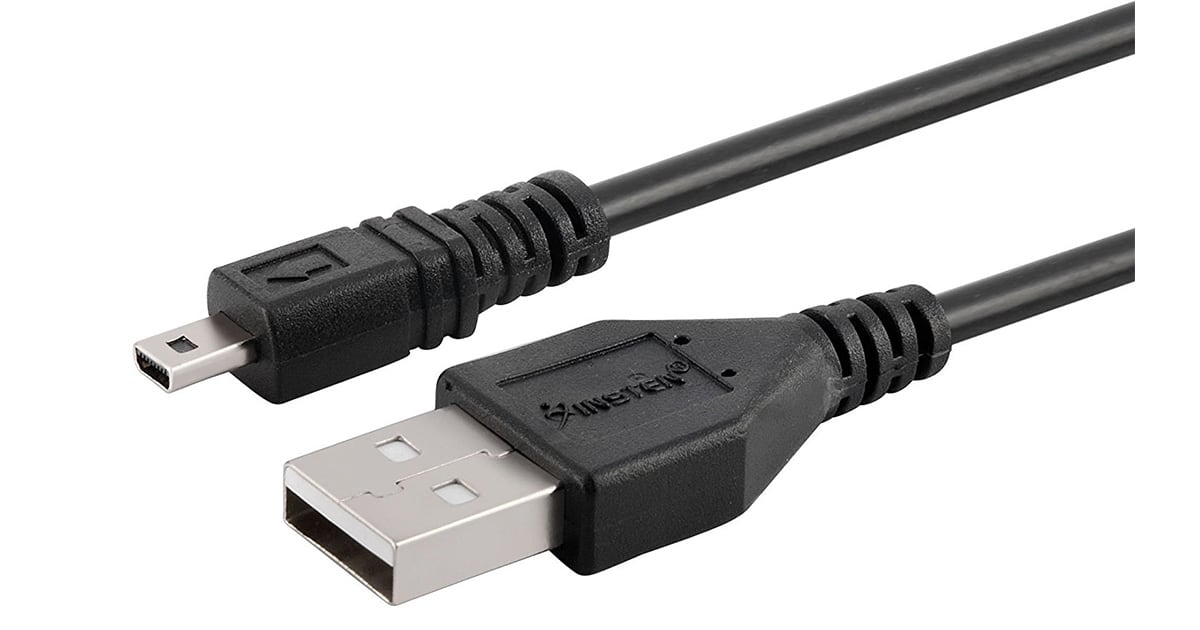Apple has plans for yet another connector in its Made for iPhone (MFi) program. The new plug—which is actually kind of old—is called Ultra Accessory Connector, or UAC, and will work along side Lightning and USB-C instead of replacing them.
UAC is a port you’ve probably seen, but assumed it was just another little USB port. It’s found on some Nikon cameras as an audio/video out port.

UAC’s benefit for Apple is its compact size. It’s a little thinner than USB-C and about half as wide, and it needs less space inside devices. Considering space is at a premium in smaller devices like headphones and earbuds, that’s a pretty big deal.
Apple plans to let accessory makers build USB-C to UAC, Lightning to UAC, and 3.5 mm headphone jack to UAC cables, and UAC ports on headphones. In other words, get ready to add another cable to your bag.
The Case for UAC
UAC isn’t replacing Lightning or USB-C, the Verge confirmed, but instead is a supplement. Why do we need another connector in our already convoluted collection of cables and adapters?
It’s all about standards—or in this case, the lack of standards. The 3.5 mm headphone jack is going away because Apple and other smartphone makers decided to remove it from their devices. It isn’t, however, going away quickly so we’re seeing a mix of devices and accessories that are sometimes 3.5 mm-compatible, and sometimes aren’t.
Lightning and USB-C may look similar, but they aren’t interchangeable. USB-C headphones, for example, only work with USB-C devices. Lightning connectors are the same, which means after decades of a standard audio plug we’re facing a future where our smartphone accessories are essentially locked to specific devices.
The solution, at least as far as Apple is concerned, is a connector that makes our headphones and other accessories compatible with both USB-C and Lightning. That’s where UAC comes in. Headphone makers include a UAC port and users plug in the cable that’s compatible with their smartphone; USB-C or Lightning.
This isn’t exactly an elegant fix for the self-inflicted problem Apple and other smartphone makers are creating by eliminating the 3.5 mm headphone jack, but it is a fix. Regardless of whether or not you agree with the decision to deprecate the traditional headphone jack on smartphones, it’s happening and it’s something users and manufacturers have to deal with.
UAC Versus Bluetooth
Bluetooth headphones are easy to find, plus they work with most smartphones. Why not go wireless across the board and forget about UAC?
While Bluetooth is convenient, it has some drawbacks. First, Bluetooth headphones require their own battery. When the battery is drained, your headphones are worthless until they’re charged again. True, some Bluetooth headphones include a cabled option, but those primarily rely on the 3.5 mm jack that’s disappearing from more phones.
Bluetooth also suffers from latency issues. For some uses, like listening to music, that’s not a problem. For others, like watching movies, that means your audio and video may be out of sync. Audio quality can suffer, too, and sound flatter compared to wired headphones.
UAC Beyond Headphones
Apple is starting with headphones for UAC, but it could be used for other accessories, too. That means device makers can build a single product that works with USB-C and Lightning instead of devices that are iPhone- or Android-specific.
Beyond headphones, that could be speakers, extra storage, microphones, and more. It’s almost as if Apple understands the need for universal connectors, but thinks they should be on the accessories we use and not on our smartphones.
[Thanks to 9to5 Mac for the heads up]
What a nightmare. The perefect solution is the one that was eliminated – the 3.5 mm standard audio jacks and plugs that are on all headphones (except the fake ones).